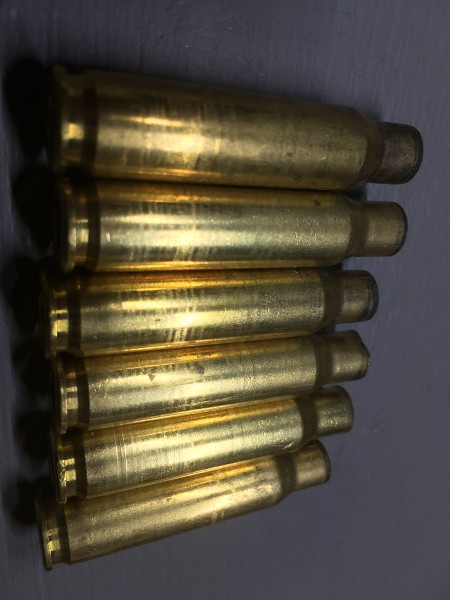Quote:
Originally Posted by HiBC
No one says "blasphemy" when we call it a headspace gauge.
That name is accurate because it refers to a gauge designed to measure chamber headspace indirectly. It measures chamber headspace by making what is called a transfer measurement taken off a case fireformed to fill out to the size of that chambaer. If you read the RCBS PM instructions, it describes determining headspace by measuring a fireformed case. But when you measure a resized case, you are not determining headspace because that case is no longer the size of the chamber.
Quote:
Originally Posted by HiBC
I'm just tired of the folkssaying "Cartridges don't have headspace",etc.
Headspace is the space a case head fits into (or a head and belt or a head and shoulder or a head and case mouth). As far as I know, commercially, the only company in the business to embrace the use of "headspace" as a case dimension, regardless of how it fits in any chamber, is Hornady. The nonsensical aspect is that a head doesn't have to fit inside a case so it doesn't need any headspace in it. What a case does have is a headspace-filling exterior dimension made up of matter (not space) that partially or fully occupies a chamber's headspace depending on how it has been handled. If you want to call that headspace-filling dimension 'case headspace', I don't really mind. My only concern is when people want to know what actual headspace is that they not be misled by the term being used to mean two different things: the size of an empty space and the size of something that typically fills that space only partway. Where both terms appear, that usage distinction has to be deduced from the context, making the meaning of "headspace" implicit rather than explicit. That means more effort is needed to accurately follow the discussion. I don't suppose most people have very much trouble following it, but newbies may, if anybody does. I blame that on Hornady.
Head clearance is not headspace. It is the excess headspace in front of the breech face when the cartridge case is fully forward against its seating surface in the chamber.
Unclenick: You know I have great respect for your knowledge and point of view.
I'll say it once more,then let it go. It seems a waste of time to do so,as I have not seen any response from anyone that indicates they understand what I'm saying.
That probably means my idea is not useful. I'm not the guy who says :"I'm the only reloader…" When "I'm the only" I might be wrong.
Once again,I agree that cartridges do not have headspace This is using the word "Headspace" as a noun.
But the headspace gauge does not have headspace either. The word "headspace" is appropriately used as an adjective to describe the use of the gauge .
Using the same logic,I adamantly do not use the term "headspace" applied to a cartridge case when the word "headspace" is used as a noun.
But a cartridge case does have measurable dimensions. Diameters,angles,lengths.
We can measure rim diameter,call it rim diameter,and communicate. We can talk about case head diameter before and after firing and come up with case head expansion. When I say "head diameter,you know which diameter I'm talking about.
Without saying a case has headspace,I can describe the length of a cartridge case from case head to shoulder reference diameter as "The cartridge case length that we associate with the headspace of the rifle"
I can identify "Which length?" by using the word "Headspace" as an adjective to identify a measurable length in the same way I can use the word "Headspace" as an adjective to identify a gauge.The cartridge case DOES have that length. The argument is over what to call that length when we measure the cartridge case.
No one has provided a useful accepted term. To fill the void,I have provided "Cartridge case length (the noun) modified by the adjective "Headspace"
I also fully understand the term "Head Clearance" I use it. Very often it is the useful term.
Now,I think I will go back to being retired from discussing this topic.
I'm the only one who can choose to stop pounding my head against an anvil.

